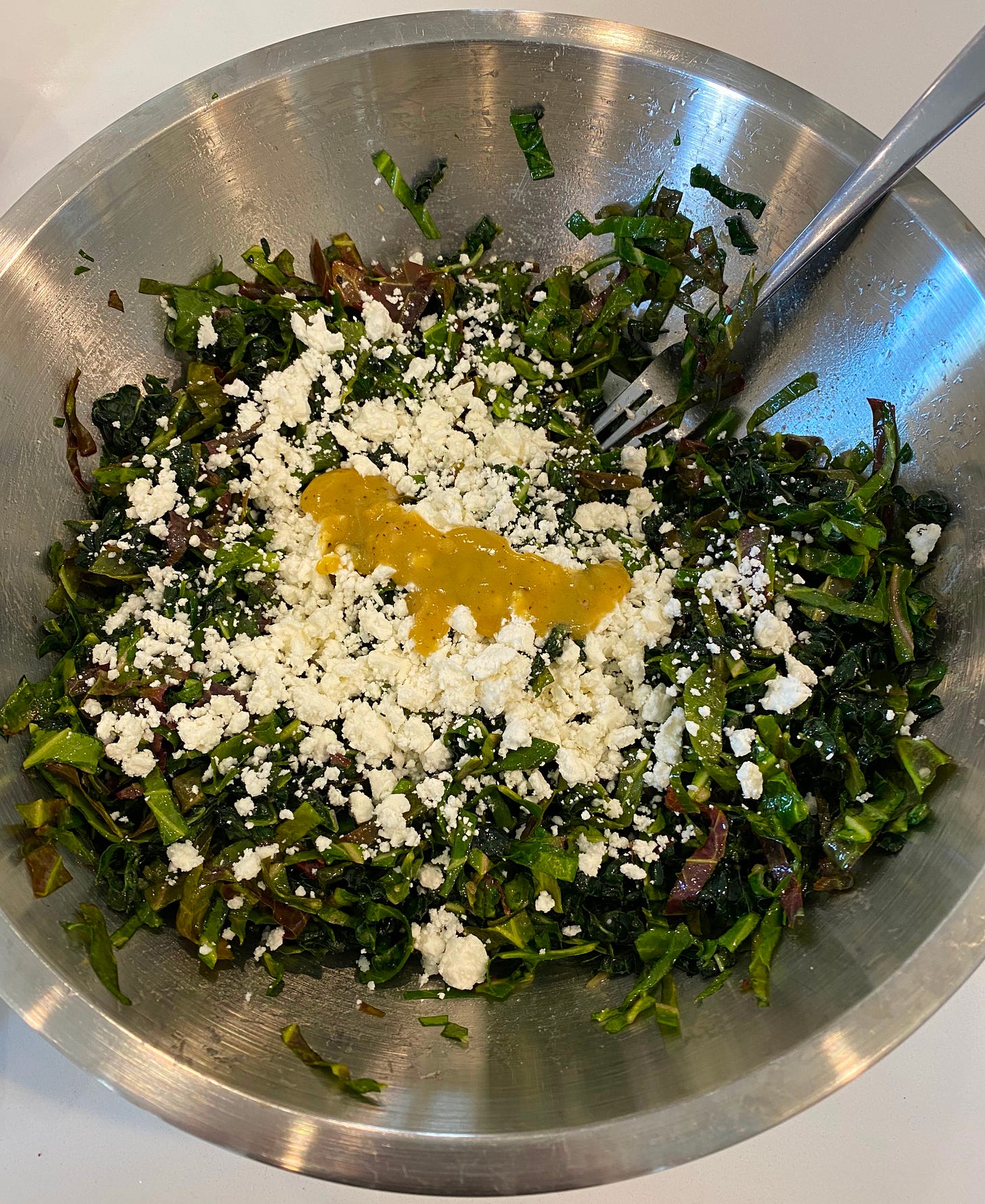Just in case you’re not aware of the reference above, here’s the source. Something that was quoted incessantly in my childhood home.
Going to the grocery store can be super overwhelming and overstimulating. At least, for me it is. Bright lights, lots of people having difficulties navigating the store layout, and like 50,000 different products to choose from. Grocery stores are literally built around the idea that the more choices you have between products, the more control the people who supply these products actually have over you. I am currently in the middle of listening to the audiobook version of The Secret Life Of Groceries, and while this concept was not new to me, having it said in this way was pretty thought-provoking. It’s a fascinating topic in general, and I encourage everyone to read about it. Empower yourselves with knowledge about exactly where our food comes from, the motivations behind what you see on the shelves (and why they are where they are), and how to better navigate the food system. We feed ourselves every single day, multiple times a day — we can’t not participate in how we choose to eat. Otherwise, we’re just headed full force toward a Soylent Green situation.
We’ve all heard it before, and if you haven’t, you’re about to hear it now: SHOP THE PERIMETER. Meaning, outside of the produce section, shop the store by keeping your right hand on the wall and see what you land on. The perimeter contains foods that are generally less processed: most non-starchy vegetables (like dark leafy greens, beets, ginger, leeks, cucumbers, bell peppers, mushrooms, etc), meat + seafood, and dairy. The middle aisles are full of the manipulative branding of industrialized food, touting labels that claim to have ingredients that are going to benefit your health for one reason or another. or are packaged in colorful boxes with mascots that are essentially different versions of Joe Camel on cereal boxes. That being said, there are products of merit in the middle aisles: grains + dried beans, herbs + spices, various canned and jarred goods, oils + vinegars, tea + coffee, and other items where the ingredient lists are short and readable.
I find that even some of the items with shorter ingredient lists can be problematic. They are often more expensive than they should be, which is just the price of convenience. And while convenience has its place, there can still be some ingredients (think emulsifiers and preservatives) that would not be used in the home kitchen, and therefore it becomes a more- or even ultra-processed food. Out of convenience, people are still not in complete control of the choices that they’re making… until there are guides or advice being made readily available like what I’m about to provide for you below.
THINGS THAT ARE TOO EASY NOT TO MAKE YOURSELF
BREADCRUMBS
save your bread scraps! let them go stale! save them in a plastic bag in your freezer. then blend in a blender or food processor until fine for things like meatballs or coarse for a quick crouton swap in salads.
ROASTED RED PEPPERS
this could not be simpler: cut in half, remove the stems and seeds, place skin-side up on a lined baking sheet. set your oven to a low broil (or high broil if you’re adventurous), place the baking sheet on a rack in the upper half of the oven, broil until the skins have large black spots. let cool completely, then run through the food processor. store in a jar or freeze until ready to use.
PESTO
It’s almost pesto-making season again, y’all.
squirreling it away #1: pestos + pre-sautéed vegetables
It’s Lovingly Made’s first real post! Big moment!
GRANOLA
This is probably my biggest money-saver, given that we constantly eat yogurt + granola. It’s a toddler’s dream come true. but between granola and the amount of fruit that a parent of a young child eats, we absolutely should not break our banks any more than we have to. Ultimately, you’re just mixing rolled oats and a variety of nuts + seeds with a liquid mixture made up of some ratio of oil and sweetener. But i won’t go into all of those details here because it’s too important to gloss over. Look out for a future issue with my own granola recipe that I’ve been perfecting over the past 15 years. All you need to know right now is to make your own granola — it’s the easiest thing in the world.
NUT MILKS
In the issue about my favorite kitchen gadgets, I mentioned a certain tool that is not necessary for the average home kitchen. But if you are a consumer of plant milks, I think that it is absolutely necessary. It is virtually impossible to find any store-bought nut/seed/oat milk without one emulsifier or another, which does no favors to your gut. So the solution that I have for you here is the Almond Cow. Yes, you are buying more raw nuts (expensive up front), but you’re not constantly buying plant milks in un-eco-friendly packaging and will end up spending less over time for the ingredients and tools that make your plant milk in 1 minute.
A cup of organic almonds will run you about $2 on Amazon (just using this asshole as a pricing example, it’s pretty unavoidable) which will make a little over 4 cups of almond milk. Pay attention to the number of ingredients: almonds and water. Compare this with the basic Whole Foods brand 32 oz almond milk for $2.19. How many ingredients? 10.
HUMMUS
The best homemade hummus is hummus made from scratch-scratch. Like you cook the beans yourself. Toss in crockpot, cover with water / broth, cook until tender. It’s just a better texture and doesn’t come with any weird endocrine-disrupting chemicals from can linings. Super! Combine in a food processor with your favorite ratio of extra-virgin olive oil, lemon juice, garlic cloves, tahini, and salt. Brownie points for adding your roasted red peppers that you made earlier.
SALAD DRESSINGS
I don’t think I’ve bought a salad dressing since 2009. This really is the kicker here, for me, because I love a salad. Not like the iceberg lettuce kind, unless you like to eat your water, but salads with chewy bitter greens — kale, collards, romaine, those are my favorites. Spinach kind of ranks under those for me since it doesn’t keep the longest in the fridge, and I can’t be bothered with a slimy salad. And it has to be a big salad. Like Elaine Benes big.
I’ve tried many different salad dressing recipes over the years, but none are as satisfying as the simplest ones. And I find that I keep coming back to the same types of tastes — tangy, sweet, a little savory. But the ones that have stuck with me recently are ones that I’ve made up after years of practicing making them up. I can see myself writing more salad dressing recipes in the future, but for now, here are my top 2:
SHALLOT DIJON VINAIGRETTE
Ingredients
½ cup EVOO (extra-virgin olive oil)
1 lemon, juiced
¼ cup sweet white vinegar
2T diced shallots
1T dijon mustard
salt + pepper, to taste
Directions
add all ingredients to a ball jar and shake until combined
TOFU TAHINI DRESSING
Ingredients
4 oz silken tofu
3T tahini
1T + 1 tsp lemon juice
2 large garlic cloves
1 tsp ACV (apple cider vinegar)
¼ tsp ground cumin
¼ tsp ground coriander
1 tsp honey
3T EVOO
salt + pepper, to taste
Directions
add all ingredients to a food processor and blend until combined
keep homemade salad dressings in the fridge up to 2 weeks
So now where do these salad dressings go?
MY FAVORITE YEAR-ROUND SALAD
COLLARD + KALE SALAD
Ingredients
1 bunch collard greens
1 bunch kale
pinch salt
quick squeeze lemon juice
crumbled feta, to taste
dressing of choice, to taste
Directions
remove the leaves from the stems and ribs (save these stems / ribs for found object soup— roughly chop them and keep in a bag in the freezer)
stack the leaves and slice across the width to cut very thin strips
put all greens in a mixing bowl, lightly salt and squeeze lemon juice over the top
massage greens with hands — squeeze until leaves start to soften and you can see a little green rubbing off on your hands
add salad dressing and feta to your tastes, toss with serving utensils
bonus tip: cut your greens soon after you buy them, store in an airtight container until ready to use — hardy greens like these should last cut up for several days in the fridge
While I feel like what I’ve provided above is fairly basic — I hope I’ve brought some new ideas to your kitchen and your table. Beyond what I’ve talked about, the
Substack is one of my favorites for inspiration for items that I can continue to not buy at the grocery store. is a G.And then for more detailed, salad-centric writing, there are always
’s brilliant creations over at . Like this creamy, garlic-chive protein dressing??From the bottom of my heart, thank you for being here.
❤️ Sarah









Another rec - homemade tahini. So easy and I think it’s a lot tastier than store bought. Just sesame seeds that you toast yourself and olive oil. It’s not bitter like store bought frequently is. Plus, it stays nicely emulsified. No hard dried block of sesame with a lake of oil floating on top.
I found a clean vanilla oat milk, brand name Malk. It contains filtered water, organic gluten free oats, vanilla, and Himalayan pink salt. Malk also makes clean creamers.